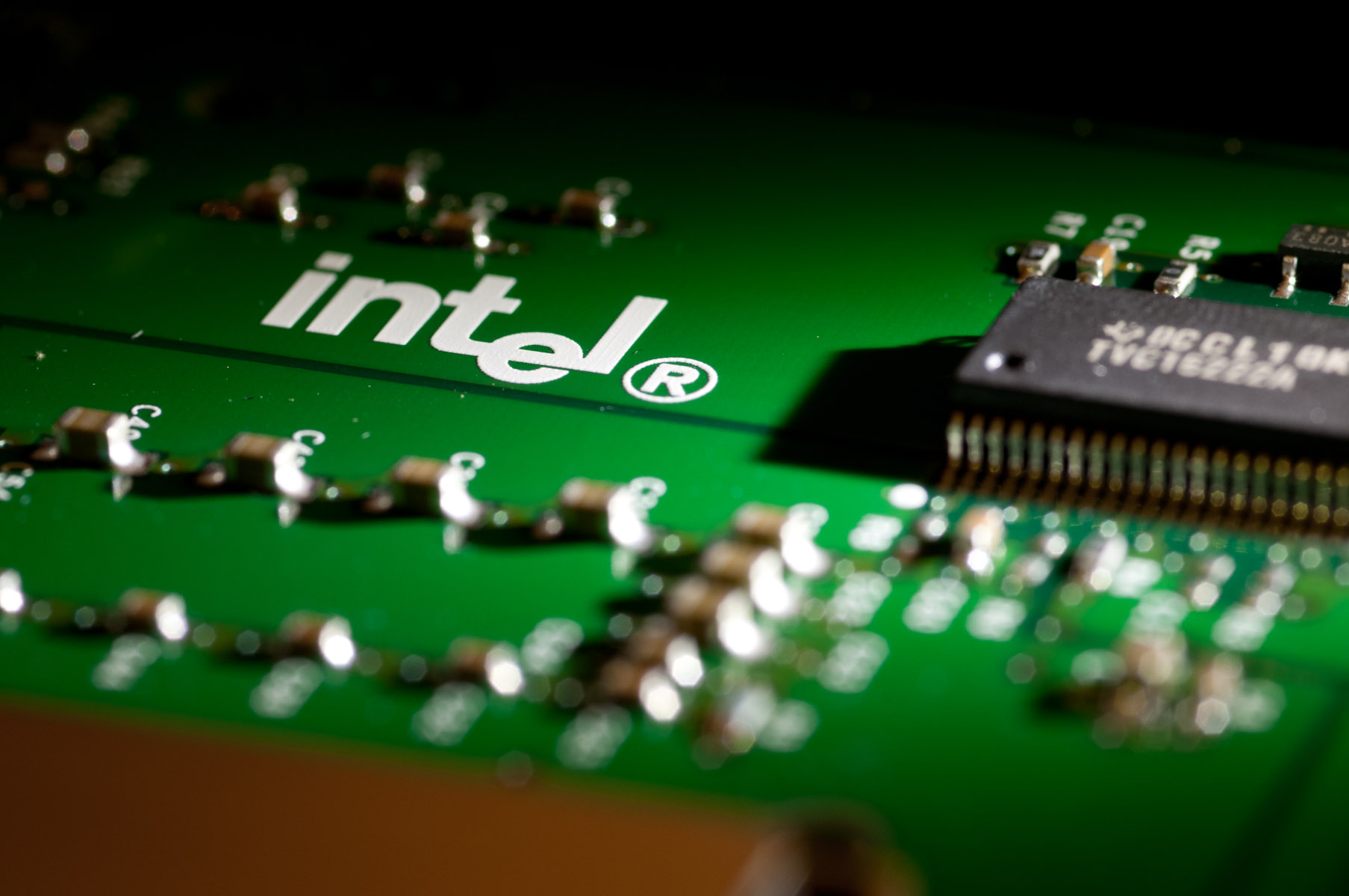Intel stocks dropped 10% to $48.60 on Friday spelling further trouble for the semiconductor manufacturer after disconcerting results earlier this year, according to The Oregonian.
Shares suffered a 16% plummet back in July and forecasts indicate that Intel will continue to drop throughout the fourth quarter and all throughout next year. The company continues to struggle with recovering from its underwhelming data center business and competing with rivals AMD and Nvidia. A 7% drop in revenue for Intel’s Data Center Group, one of the largest sources of Intel’s revenue, was responsible for the most recent drop in shares.
Intel is one of many companies to suffer financially in the face of the COVID-19 pandemic, with an overall 30% drop in stock price since its year-topping $68.47 valuation in January. However, their gradually decreasing value throughout 2020 has little to do with pandemic-induced unemployment. Shares of the Nvidia Corporation, the leading GPU manufacturer and close competitor of Intel, skyrocketed 292% from $196.40 in March to $573.86 in September. Meanwhile, CPU and GPU developer Advanced Micro Devices (AMD) has overtaken Intel in share valuation with stocks increasing from $49.10 at the beginning of the year to $81.96 as of Friday, Oct. 23.
The Oregonian reported on Oct. 19 that Intel additionally sold their NAND memory chip business to South Korea-based semiconductor supplier SK Hynix. The move allows Intel to focus primarily on the production and development of their next-generation CPUs by pulling them out of the flash-memory race. They are, however, keeping their line of Optane storage drives. Hynix’s acquisition of NAND represents Intel’s continued efforts to offload their periphery businesses following last year’s report by CNBC that the company was selling their 5G modem business to Apple.
Despite Intel’s headquarters being located in Santa Clara, most of their employees are stationed at their local campuses in Hillsboro, Oregon. Efforts at the Hillsboro campuses are primarily directed towards the production, manufacturing and development of microprocessors. As such, the offloading of NAND is unlikely to affect employment at the Hillsboro campuses. However, recent talks regarding outsourcing of microprocessor manufacturing could majorly affect Oregon’s tech economy.
Manufacturing problems from within Intel have caused major delays for their upcoming next-generation 7nm processors. As such, the company has struggled over the decision on whether or not to outsource production of their new processors to the Taiwan Semiconductor Manufacturing Co. The decision has been under consideration for several months, as Intel’s self-manufacturing of new processor technology allows them to cut the middle-man in the distribution chain and contribute to Oregon’s tech economy. If the deal goes through, it is possible that Intel’s Oregon-based manufacturing facilities will lose many workers due to dwindling microprocessor manufacturing.
These recent efforts to reform Intel’s business strategy arrive on the back of hiring a new chief strategy officer Saf Yeboah-Amankwah last month. Intel’s lack of transparency regarding strategic reform has been another contributing factor to their decreasing stock prices; especially in comparison to AMD and Nvidia. In July, AMD announced the release of their Zen 2 7nm Ryzen 4000 chips for prebuilt desktop PCs following the success of the laptop-equivalent 4000 chips earlier in the year. Additionally, AMD recently announced a new lineup of Zen 3 Ryzen 5000 chips that greatly outperform Intel’s top i9 processors at a much lower price point.
Nvidia’s recent foray into the data center business is also growing significantly, with a 167% increase in revenue in the last quarter. The Motley Fool reported that Nvidia’s recent acquisitions of Mellanox Technologies and Cumulus Networks are partially responsible for their newfound success alongside the development of Nvidia’s new Ampere architecture. The recent release of Nvidia’s new RTX 3000 series of GPUs has also contributed to their continuously-growing stock price.
Consulting firm Jon Peddie Research reported in June that the PC gaming hardware industry has grown rapidly in the midst of the pandemic. Despite this, Intel has not received the lion’s share of those benefits due to tough competition. AMD’s CPUs have grown significantly more popular with consumers in recent years due to affordability and performance, and Intel is gradually losing their lead to them. “We do not believe the company’s situation has bottomed; to the contrary, they are likely just getting started,” said Bernstein analyst Stacy Rasgon on the state of the company, as reported by MSN.
